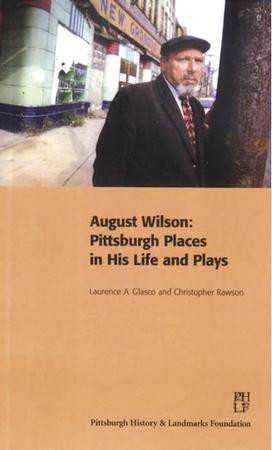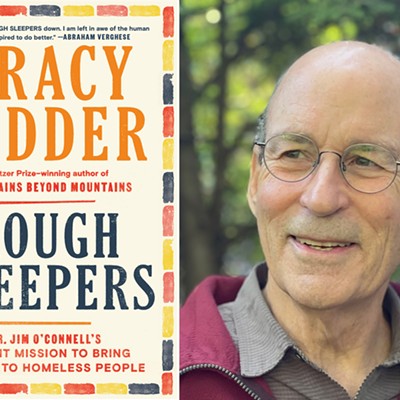For playwright August Wilson, all of Pittsburgh was a stage. His famed "Pittsburgh Cycle" used the city as the setting for his 10-play epic of the modern African-American experience. Now comes August Wilson: Pittsburgh Places in His Life and Plays, which lovingly returns the favor.
Wilson used the city's geography as a backdrop for his action; this almost pocket-sized 166-page paperback uses Wilson's art and life as backdrop for exploring Pittsburgh geography. Wilson's childhood Hill District home, the library he loved to visit, the jitney station where he set one of his plays ... all are here.
Like a theatrical production, the book combines many voices. University of Pittsburgh professor Laurence Glasco contributes a concise gloss of local 20th-century black history. Pittsburgh Post-Gazette theater critic Christopher Rawson contributes his extensive knowledge of the plays and their author. Introductory essays are penned by Wilson's niece, Kimberly Ellis, and his friend and one-time artistic collaborator, former city councilor Sala Udin. The publisher, the Pittsburgh History & Landmarks Foundation, offers its own expertise on architectural history.
The book's central portion, in fact, is arranged as a tour of Wilson's art and life, providing a chance to look closer at buildings you might otherwise zip past on the way to Oakland. For many Pittsburghers, Connelley Trade School is just a looming presence behind the Golden Triangle. Here we see its decorative paneling close up, while learning of its connections to our city's most famous playwright.
The book (which sells for $8.95) offers an interesting guide to Wilson's creative process. There may never have been a house at 1839 Wylie Ave., the home of Pittsburgh Cycle matriarch Aunt Ester. But 1839 is, significantly enough, the year of the Amistad slave-ship revolt.
Admittedly, not every stop seems worth a visit. Some locations included here are only name-dropped briefly in Wilson's dialogue. Many landmarks have been wiped away. ("Ignore the modern houses," one entry advises. "[T]he area would have looked very different in 1911.")
But whether crumbling, restored or left vacant, these landmarks speak to black Pittsburgh's shifting fortunes just as Wilson's plays do. And in both art and life, boundaries between the spiritual and the physical tend to blur.
We're reminded, for example, that Wilson's burial site, O'Hara Township's Greenwood Cemetery, was for many years among the few cemeteries open to blacks. Wilson spent most of his adulthood outside Pittsburgh, but he could always find here the perfect setting.















